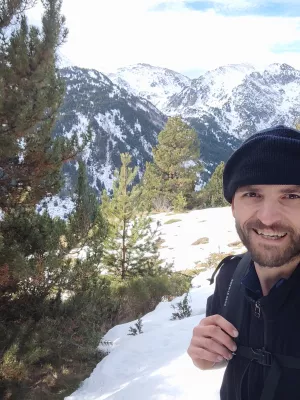
Santi Roca Fabrega
Research engineer

Galactoseismology in cosmological simulations Vertical perturbations by dark matter, satellite galaxies, and gas
Author
Summary, in English
Context. Complex models recently became available for studying the dynamics of disk galaxies such as the Milky Way (MW). These models include the global dynamics from dwarf satellite galaxies, dark matter halo structure, gas infall, and stellar disks in a cosmological context. Aims. We use a MW model from a suite of high-resolution hydrodynamical cosmological simulations named GARROTXA to establish the relationship between the vertical disturbances seen in its galactic disk and multiple perturbations from the dark matter halo, satellites, and gas. Methods. We calculated the bending modes in the galactic disk in the last 6 Gyr of evolution. We computed the vertical acceleration exerted by dark matter and gas in order to quantify the impact of these components on the disk, and compared this with the bending behavior with Fourier analysis. Results. We find complex bending patterns at different radii and times, such as an inner retrograde mode with high frequency and an outer slower retrograde mode excited at different times. The amplitudes of these bending modes are highest during the early stages of formation of the thin disk (20 km s−1) and reach up to 8.5 km s−1 in the late disk evolution. We find that the infall of satellite galaxies leads to a tilt of the disk, and produces strong anisotropic gas accretion with a misalignment of 8◦ with subsequent star formation events and supernovae, creating significant vertical accelerations on the disk plane. The misalignment between the disk and the inner stellar and dark matter triaxial structure, which formed during the ancient assembly of the galaxy, also leads to a strong vertical acceleration of the stars. We also find dark matter subhalos that temporally coincide with the appearance of bending waves in certain periods. Conclusions. We conclude that several agents trigger the bending of the stellar disk and its phase spirals in this simulation, including satellite galaxies, dark subhalos, misaligned gaseous structures, and the inner dark matter profile. These phenomena coexist and influence each other, sometimes making it challenging to establish direct causality.
Department/s
- Astrophysics
Publishing year
2024-03-01
Language
English
Publication/Series
Astronomy and Astrophysics
Volume
683
Document type
Journal article
Publisher
EDP Sciences
Topic
- Astronomy, Astrophysics and Cosmology
Keywords
- galaxies: evolution
- Galaxy: kinematics and dynamics
- methods: numerical
- stars: kinematics and dynamics
Status
Published
ISBN/ISSN/Other
- ISSN: 0004-6361

